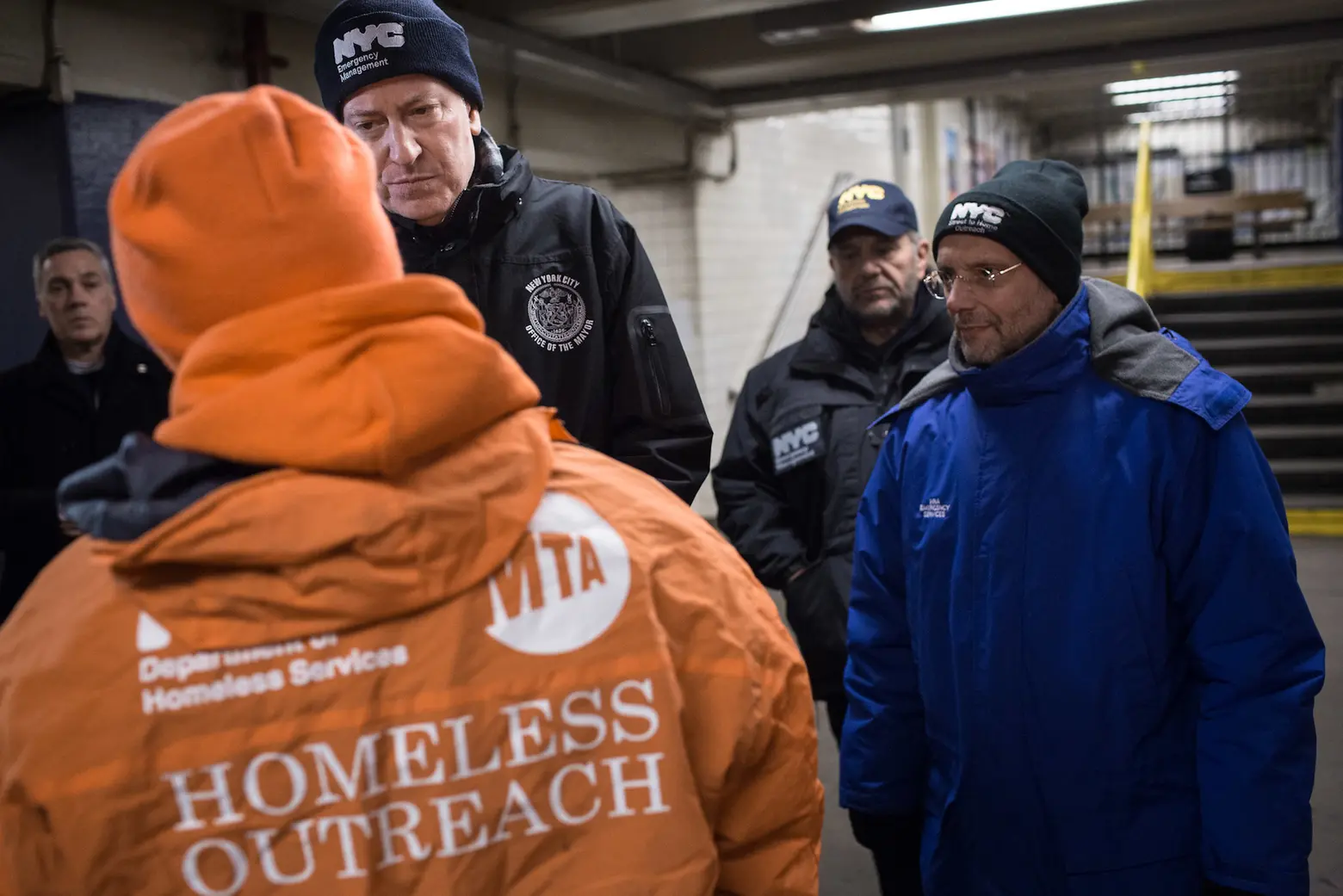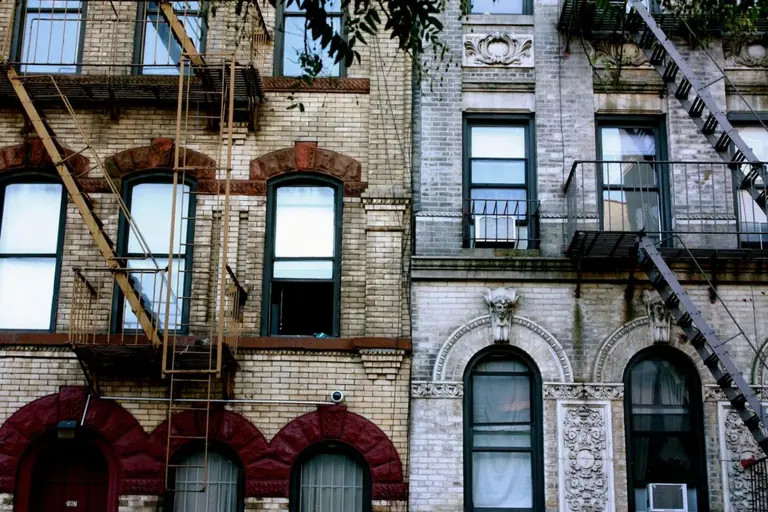De Blasio unveils $100M plan to end long-term street homelessness

Photo credit: Michael Appleton/Mayoral Photography Office on Flickr
Mayor Bill de Blasio on Tuesday released a plan to get 3,600 homeless New Yorkers off city streets within five years. The six-point initiative adds new “safe haven” beds, creates 1,000 permanent units of housing, provides new health resources, and ramps up the city’s outreach response. Named The Journey Home, the $100 million plan comes as the number of those experiencing homelessness in the city has reached the highest levels in nearly 100 years, with more than 60,000 people currently living in homeless shelters.
“Homeless New Yorkers are just like us—they deserve our love and compassion and a commitment to go as far as we can to help,” de Blasio said. “So here’s our promise: we will help every last person experiencing long-term homelessness off our streets and we will do more than we ever thought possible to bring them home.”
According to Politico, half of the 3,600 unsheltered people identified by the city are considered “long-term” homeless. The de Blasio administration is calling the plan the “first-in-the-nation” to solve street homelessness.
By 2024, the action plan calls for an increase in the number of beds set aside for street homeless individuals by 64 percent, up to 2,800 beds, or triple the amount offered in 2014. De Blasio’s last year in office is 2021.
Last week, the City Council and the de Blasio administration reached a deal that would require developers of new housing developments that receive city financing to set aside at least 15 percent of rental units for homeless individuals.
Most notably, the Journey Home plan creates 1,000 permanent housing units for homeless New Yorkers, a solution pushed by advocates for years. The city will work alongside the Housing and Preservation Department to identify privately-owned properties with high vacancy rates and work to convert them into permanent housing.
“We are pleased to see Mayor de Blasio moving towards providing the resources that homeless individuals on the streets actually need: permanent housing and low-threshold shelters,” Giselle Routhier, the policy director at Coalition for the Homeless, said in a statement. “This investment is a critical step toward helping people find safe and permanent housing.”
But Routhier also called out the city’s plan to monitor homeless New Yorkers at subway stations by using a new surveillance system. As 6sqft previously reported, NYPD officers will watch feeds from more than 100 live cameras that show views from stations and platforms in order to respond to “quality-of-life and public safety concerns.”
In addition to the live feed, the city will expand the Subway Diversion Program, which aims to help homeless individuals avoid court by diverting them to support programs. Through the program, NYPD officers refer individuals to outreach services instead of issuing them a civil summons.
Routhier described using NYPD officers for outreach as “counterproductive and misguided” in a statement. “The practice of issuing summonses, surveilling homeless individuals, and coercing people to leave the subways with threats of arrest are inhumane and a misuse of police officers’ time,” Routhier added.
“We urge the Mayor to shift the focus of engagement from NYPD officers to trained social services professionals in all interactions with homeless individuals, and to further build upon these initial investments in housing and safe havens.”
The program also connects unsheltered individuals with serious mental health challenges to care or mobile treatment teams. Specialized treatment interventions for trauma and substance abuse will be offered.
“In a city where a billionaire can afford a $240 million penthouse, no one should be forced to sleep on the street,” State Sen. Brad Hoylman said. “New York City is in the midst of a housing affordability crisis, which is why I was proud to help pass historic tenant reforms in the New York State Senate. For those who still cannot afford housing, we have a responsibility as a city to provide care and resources.”
RELATED:




























